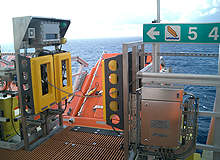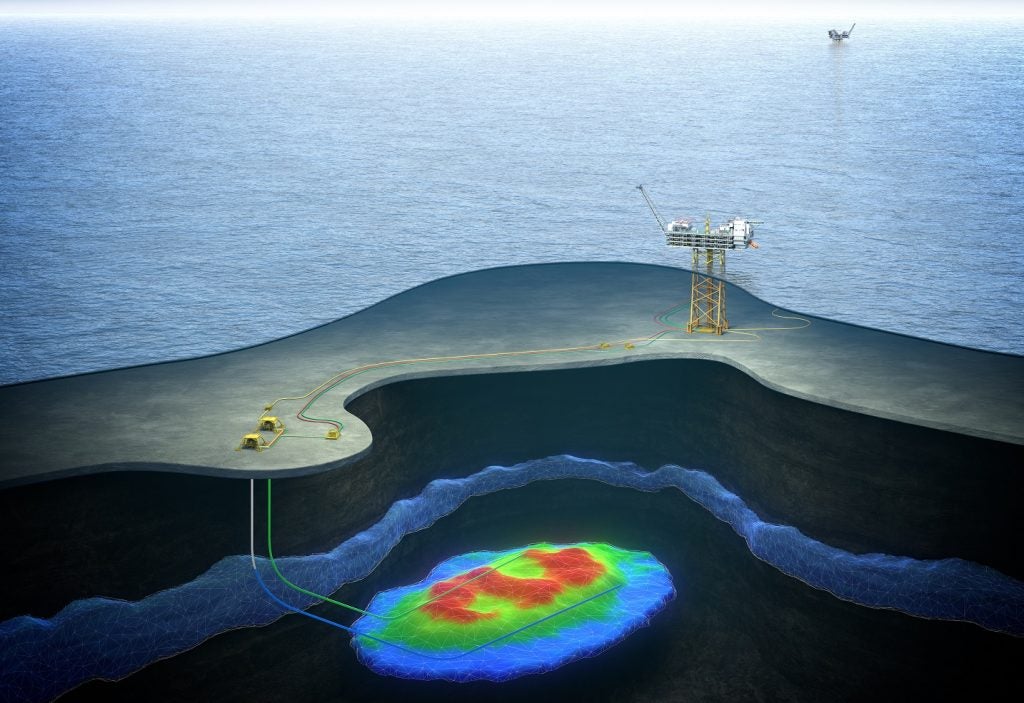
A combination of remote locations, complex equipment and the production of highly explosive resources makes offshore oil and gas platforms some of the world’s most hazardous work environments, as was tragically demonstrated in last year’s explosion and spill at BP‘s Deepwater Horizon platform in the Gulf of Mexico.
As a result, the importance of rigorous safety standards has never been more strongly emphasised by industry and regulators. In the last few years, electronic safety systems have been gaining in popularity as well-implemented software begins to prove its advantages over traditional paper-based safety regimes. Electronic systems provide the ability to track the location of on-board personnel, as well as speeding up muster times during emergencies and adding an extra layer of security.
S3-ID is a UK-based provider of safety systems for location awareness, mustering and security, all based around specialised ID tags that can be tracked and used to log in and out of platform areas. Offshore Technology discussed the potential of these systems with S3-ID spokesman Doug Woodbridge.
Chris Lo: What are the main reasons why the offshore environment requires this extra layer of personal security?
Doug Woodbridge: The classical approach that has been adopted in the offshore environment has been to bring personnel to a designated muster point, and then manually correlate who has arrived against a checklist or a T-card system.
This has to be done quickly and efficiently. In the North Sea, for example, there is a requirement to be able to get everyone safely mustered within 20 minutes. Whilst this can be achieved, it can still be a challenge even in ideal conditions with traditional manual based solutions.
See Also:
In an emergency scenario, things invariably don’t work as well as in a controlled muster drill. Under real stress, people behave differently. So the main reason for this extra layer is that such systems can significantly improve on conventional paper-based systems by getting personnel accurately mustered and to safety more rapidly. There is also a sound business case for such systems. As they can reduce muster times by over 70%, they can reduce offshore downtime both in regular weekly routine musters and in alerts.
How well do you really know your competitors?
Access the most comprehensive Company Profiles on the market, powered by GlobalData. Save hours of research. Gain competitive edge.

Thank you!
Your download email will arrive shortly
Not ready to buy yet? Download a free sample
We are confident about the unique quality of our Company Profiles. However, we want you to make the most beneficial decision for your business, so we offer a free sample that you can download by submitting the below form
By GlobalDataWith our systems, all personnel are provided with individually assigned electronic tags. In the event of a muster, personnel simply present themselves at the muster point, their unique tag is automatically read and their name appears. If they’re at their correct muster point a green light flashes and they can proceed directly onto the lifeboat.
If they’re at the wrong muster point the light flashes amber, and it’s then the choice of the lifeboat coxswain to either direct the person to the correct muster station, or allow them to continue into the boat. Either way, they’re automatically registered by the system and their location known. The system then immediately shares this information with the central control, other linked facilities and emergency teams.
So, all personnel have to do is proceed into the lifeboat in a controlled manner – although in an emergency, we can pass more than one person through those portals at a time if we have to, as active RFID solutions can read multiple tags simultaneously.
CL: What software comes with these ID tags, and how has S3-ID worked to make interfaces user-friendly and customisable?
DW: Our S3 products and solutions comprise a range of hardware and software products that we’ve developed to cover a whole range of different applications: eLocator, eMuster, eSecurity and eLogistix. It’s a building block approach – the central element is the tagging technology and eLocator software suite which provides location awareness of personnel.
The eLocator products are really the core of everything we do. They comprise the antennas, readers and portal systems along with the core eLocator software suite, which is resident at the data centre. The eLocator software is basically a custom software application and GUI [graphical user interface] that sits on top of a very powerful Oracle-based relational database. We’ve then got a whole range of other hardware products and software applications that can be added to perform specific tasks, such as the mustering, security and personnel logistics.
CL: Can these systems have an effect on security as well as safety?
DW: Yes, once a tag has been allocated to an individual, permissions can then also be allocated to that tag. There is no need for separate tags; the same tag as used for location awareness and mustering can be used for access control. With our eSecurity products, someone wearing a tag with appropriate permissions could be given access to restricted areas; as you come to a secured door your tag is read and the door is opened for you if you have permission to enter. That technology overlaps with our location products, since when someone is recorded as passing through a door you have a very precise locational fix on them.
An example of this is the system we recently provided for location awareness; access control and mustering on board an FPSO for BP Angola. They wanted to know where people were located around the vessel, control access so that if there was a problem they could lock down the vessel and rapidly muster personnel in an emergency.
If there is a disaster, you want to know who made it to muster and the last-known location of those that remain unaccounted for. What you don’t want to do is send rescue teams into unnecessary danger for a person who is already safe. And if there is somebody genuinely missing, you want to minimise the risk exposure for your rescue teams as they go into a danger zone.
CL: Have you found that offshore operators have been quick to adopt this kind of technology into their safety plans?
DW: When you have a disaster such as happened in the Gulf [of Mexico] recently, there is a sharp focus on safety and you see a distinct increase of interest. Operators have started to realise that investing in safety also makes commercial sense, as well as enhancing the safety of personnel.
Saving time offshore means saving money too, particularly when you consider the potential cumulative impact of lost production or man-hours on a platform that could be producing an output worth £500,000 to £1m per day. Offshore Statoil, using our systems, can do a complete muster, complete reconciliation, and all reports in under seven minutes.
So this technology not only saves time and lives, it also saves cost. You can also leverage other benefits from the technology by controlling access. We see security as a growing area of importance, and I think we’re going to see it grow further with the increased risk of terrorism, piracy and other security compromise situations.
CL: Do you think electronic security measures will be folded into regulatory requirements in the future?
DW: What we are starting to see in many regulatory frameworks is that time constraints and compliance requirements are starting to be set for carrying out safety procedures, and there is now a requirement that POB/POS and muster information should be available and stored in multiple locations, so in the event of a disaster you don’t lose everything. Classical paper systems don’t do that, because your information is in one location. So standards are now accelerating the move to towards electronic systems.
CL: What do you think these systems could be able to achieve for offshore operators in years to come?
DW: There is a lot that can be done to extend the benefits. Once we’ve got an individual tagged, there is very little we can’t do with that information. We can assign permissions to that tag which enable personnel to access a room or control machinery. The technology can also interface with permit to work systems or cross-reference with time and attendance. It’s only limited by the imagination.
Location awareness solutions can cover virtually any application from platform to extended plant by applying technology ranging from RFID solutions to ultra wide band and GPS+ based technology. We’re even looking at some potential applications that would cover hundreds of square kilometres, as the technology can be scaled up.
We can monitor lone workers and with some of the next-generation products that are coming up, we will even be able to communicate and alert people through the tags. So the possibilities are endless. Potentially starting from a single site or platform we can offer solutions that can be scaled up to manage a whole company’s infrastructure if required.




